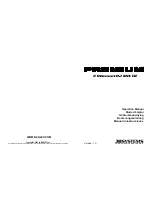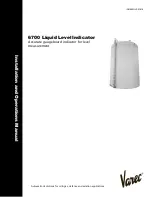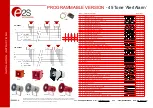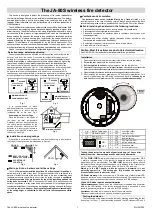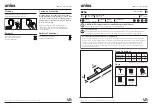
7.0 CONTROLS AND CONNECTIONS
7.1 Front Panel
1.
EDIT:
Enters and exits the Keyboard Multi-Function mode where additional
features and capabilities of the keyboard may be accessed. The LED next to the
Edit button indicates whether or not Keyboard Multi-Function mode is active.
Please see
Section 9.1
for more details on using Keyboard Multi-Function mode.
2.
▲
/
▼
Octave / Assignable Data Buttons:
These buttons default to adjusting the
keyboard octave range, but they can be reassigned to other useful functions.
When assigned to MIDI controllers, the messages are sent out on the Global
MIDI Channel.
The
▲
/
▼
Octave / Assignable Data Buttons behave differently depending on
how you press them. A single button press changes the value by one increment,
while holding a button down changes the values quickly. If you press both
buttons at the same time, it will reset the value back to 0. Pressing both buttons
and EDIT at the same time will reset any Transpose value back to 0. Please see
Section 10.1
for more details on using the Octave buttons and
Section 10.2
for
more information on using the Transpose feature.
3.
SWITCH:
This button allows you to alternate between two banks of Knob
controller assignments. This effectively doubles the number of assignable Knob
controllers from four to eight. The LEDs above and below the button indicate the
currently selected controller group, either A1-A4 or B1-B4.
4.
A1-A4 and B1-B4 KNOBS:
The Knobs have useful default assignments, but
they can be assigned to any MIDI CC (Control Change message) that you
choose. You can even assign an independent MIDI channel for each knob. This
allows you to get more expressive with your sounds during your performance.
For example, with a knob assigned to a synthesizer's filter, it is possible to make
the sound brighter or darker as you play. For more details on KNOB
assignments, see
Section 9.2
.
6
1
5
2
2
6
7
8
3
9
4
4
4
4
Summary of Contents for 606304
Page 1: ......
Page 2: ......
Page 3: ......
Page 4: ......
Page 5: ......
Page 7: ......
Page 9: ......
Page 10: ......
Page 11: ......
Page 12: ......
Page 13: ......
Page 14: ......
Page 15: ......
Page 16: ......
Page 17: ......
Page 18: ......
Page 19: ......
Page 20: ......
Page 21: ......
Page 22: ......
Page 23: ......
Page 24: ......
Page 25: ......
Page 26: ......























